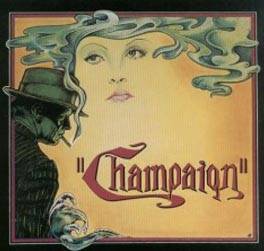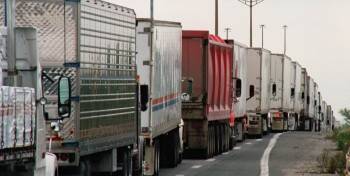 It’s the 35th anniversary of one of the greatest American movies: Chinatown. It’s certainly in my top three; partly because it’s a brilliant negation of that durable American storyline: the lone wolf hero who puts a society steeped in corruption back to rights [the final lines emphasizing the futility: “Forget it, Jake, it’s Chinatown.”], and partly because it’s about the nitty-gritty: real estate, local government, economic development, business, infrastructure, land use and agriculture, and driving farmers off the land to get the “highest best use” on it.
It’s the 35th anniversary of one of the greatest American movies: Chinatown. It’s certainly in my top three; partly because it’s a brilliant negation of that durable American storyline: the lone wolf hero who puts a society steeped in corruption back to rights [the final lines emphasizing the futility: “Forget it, Jake, it’s Chinatown.”], and partly because it’s about the nitty-gritty: real estate, local government, economic development, business, infrastructure, land use and agriculture, and driving farmers off the land to get the “highest best use” on it.
The film compresses time in the service of brevity, but it gets at the essence of what allowed Los Angeles to become Los Angeles. Despite explosive growth through the 1920s (In 1890, L.A. was smaller than Evansville, Indiana, at 50,000 people; by 1930, it was one and a quarter million and the fifth largest city in the country), L.A. was still a bit of a backwater; its population density was ridiculously low.
The boom was from oil (in the ‘20’s L.A. accounted for about a quarter of all of American production), aviation (later defense), and climate: i.e. the film industry, retirement communities, and agriculture. The big industry where fortunes were made though, was real estate. It was a place striving to become a metropolis, but built on the grease of the cheap petrol, but it became the world’s biggest suburb.
Looking at L.A. today, we see square miles of concrete (even a concrete river), sprawl, smog, extreme auto-dependency, and in the view of one writer, “a concatenation of competing city states–torn by racial enmity, economic disparity, and social anomie.”
It’s hard to imagine that L.A. was once an agricultural area: citrus, vegetables, chicken and egg farms, ranches, nut and avocado groves, and on and on. Even as late as the 1940s, planners attempted to incorporate agricultural land-use into the metropolis.
What made L.A. possible, though, was solving an infrastructure issue: providing enough water. That’s the animating issue in Chinatown, of course, and in the real world, the control of water in the west determines who gets the sugar in future economic development. Here in this improbable place on the Grand Prairie, where we only aspire to “micro-urban,” the limiting infrastructure issue is something else — roads — or that’s what some would have you believe.
BRINGING IT ALL BACK HOME
And so we turn again to Olympian Drive, which is a much bigger infrastructure issue for Champaign-Urbana than most people care to realize. Of course, L.A. is the big wicked city, and C-U is the all-sweetness-and-light small town (or micro-urban), and they have nothing in common. But when it comes to economic development, which we might consider the ultimate public-private partnership, the stories everywhere have a lot in common.
This is certainly not to suggest are any hints of incest, murder, fraud, knives in noses, or the scent of gardenias here. Nor that Clint Atkins is Noah Cross.
But still, Olympian Drive is important: it’s how the local powers see the future. At last week’s meeting, at which the Champaign City Council put its imprimatur on the project, City Manager Steve Carter was quoted as saying “this road is probably the most important economic development project in the county that we’ll see in the next 25 years.”
That’s probably not hyperbole, should Carter’s assumptions come to pass. If they don’t, it’s just another episode of wasted land and wasted resources, not to mention the opportunity cost of not putting real effort — something beyond changing out light bulbs — into sustainable development.
The Champaign City Council vote last week was the latest effort to get as many public bodies on board as possible before the “Champaign County First” group went to Washington, D.C. today (03/01/10) for some confabs with the feds to plead for money to do the road project.
Opponents, who can’t afford the travel and a week in D.C., write letters to the editor, attend meetings to make their case and get brushed off, and sign petitions. They’re putting up a dogged fight, but for right now, the fix looks to be in on this one. The opponents, led by farmers where the road would go through, say it’s a road to nowhere, unneeded and senseless, that will eat up 85 (actually probably 200 or so) acres of the world’s best farmland, and cut up farms that have been in families since the 1860s. These and other costs they cite are indeed significant, but they are peanuts compared to the real costs.
 It is not a road to nowhere. The goal is not the road, it’s the 1600 acres that will be turned into industrial land, mostly for concrete to support fleets of diesel-fueled semi-trucks, warehouses, parking lots and the like. That is where the road goes to, and it’s coming from the Interstate highway system.
It is not a road to nowhere. The goal is not the road, it’s the 1600 acres that will be turned into industrial land, mostly for concrete to support fleets of diesel-fueled semi-trucks, warehouses, parking lots and the like. That is where the road goes to, and it’s coming from the Interstate highway system.
It is not senseless. Even once-Green Urbana mayor Laurel Prussing is a strong proponent. John Dimit, president of the Urbana School Board and president and CEO of the Champaign County Economic Development Corporation, recently said “look at the Apollo subdivision,” a mostly trucking and warehouse concrete pad along the completed portion of Olympian Drive, and see the economic potential of the area. Dimit was quoted in the News-Gazette as saying, “We need those jobs, we need the ability to promote that area for employers. [Unfortunately, much of the land that might developed, while in Urbana’s Extra Territorial Jurisdiction, is in the Champaign School district.]
This is economic development, or growth at least. [It may be time to distinguish between growth and development.] Cities and school districts across the country are desperate for money in the face of rising poverty rates, unemployment, increasing costs, sullen taxpayers, and general selfishness. So Dimit and others are far from being out of line in looking for any way to get income into public facilities. The question is, is this the best way, or even a good way?
The infrastructure issue here is not the water; it’s the connection to the Interstate system. Dimit said, “With the current road network, it’s very, very difficult to attract employers to that area.” That begs the question of why that area. The statement points to trucking, shipping and warehousing. One could say it’s for manufacturing, but there are acres of unused land within the cities for that. So what companies are they actually courting? And why? There has been little public discussion of just what the proponents see as the real community benefits to this project. How many jobs? At what wages? At what cost? In what industries? etc. etc.
A more fundamental issue is: why are we pursuing this type of exogenous growth? This strategy is almost always robbing Peter to pay Paul — a zero sum game that is the nasty side of competition. Does it really serve the function of improving, in the context of Adam Smith, our “comparative advantage” in these parts, or is it going in precisely the opposite direction — destroying the very thing that might be our best comparative advantage? One of the inane comments you can hear around here is “it’s just farmland,” which seems to mean the “lowest worst use” of land, at least land in proximity to an urban, or micro-urban, center. But how is this calculated, over what period, and using what assumptions?
A TRIP BACK TO THE COAST
Few cities have economically developed as spectacularly as Los Angeles in the 20th century. Today the linchpin of its economy is its status as one of the largest ports in the world. That includes the miles and miles of warehouses along the Alameda Corridor and into surrounding counties, as well as the Interstate truck routes leading out to the nation. But with all the wealth generated from L.A.’s economic development, the public schools are terrible.
The economic development creed sometimes sounds like growth for growth’s sake, which as Edward Abbey astutely noted is the logic of the cancer cell. There’s more than a bit of that in seeing growth as natural law; that it’s inevitable, and it will continue in a similar manner to the way it always has. It’s time to question some of those assumptions.








